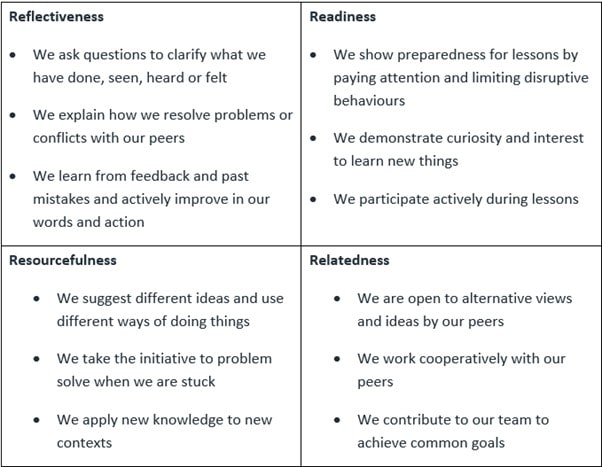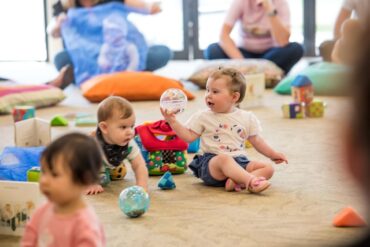? Understanding Dispositions to Learn: A Parent’s Guide ?
Hello Superstar Parents! Are you eager to pave the way for your little one’s endless curiosity and love for learning? You’ve come to the perfect spot! Today, we’re going on a joyful journey through the fascinating realm of learning dispositions. ??
As a beacon of guidance in your child’s life, knowing about dispositions to learn is incredibly handy. These inherent traits, tendencies, and attitudes towards learning not only shape their educational experiences but can also influence their lifelong adventure in acquiring knowledge and skills. Together, let’s explore how you can nurture a love for learning that burns brightly within your child’s heart! ?
What Are Learning Dispositions?
Before we dive in, let’s unwrap this intriguing concept. Learning dispositions are the attitudes or habits of mind that influence how an individual engages with, responds to, and profits from learning experiences. Picture them like invisible backpacks filled with tools for successful learning adventures! ?? These include qualities such as curiosity, resilience, persistence, flexibility, courage, and the ability to reflect on one’s learning process.
Why Are They Important?
You may be wondering, “Why should I pay attention to learning dispositions?” The answer is simpler than a child’s laughter: they are KEY to effective learning! Having positive learning dispositions helps children face challenges head-on, seek solutions with gusto, and remain lifelong learners. Much like superheroes, these qualities equip them for the academic arena and the bigger school of life! ????????
Nurturing Positive Dispositions
Now for the sparkling part: how to foster these wonderful attributes in your child. Here are some vibrant ways to start:
- Cultivate Curiosity: Encourage questions and let your child’s inquisitive nature lead the way in exploring the world. A simple “Why is the sky blue?” can turn into a magical science lesson.
- Build Resilience: Help your child “bounce back” from setbacks by teaching them that mistakes are not failures but stepping stones to improvement.
- Encourage Reflection: After an activity or learning experience, have reflective conversations. Ask, “What did you learn?” and “What could we do differently next time?”
The Role of Parents in Shaping Dispositions
Dear parents, believe it or not, you are the wizards with the power to shape your child’s learning dispositions! Your attitudes, the way you approach challenges, and the learning atmosphere you create at home cast powerful spells on your little ones.
Let’s focus on creating enchanting learning environments and modeling positive dispositions. Whether it’s tackling a new recipe in the kitchen or working through a difficult puzzle, show them that learning is not a chore but a thrilling quest! ?????
Embrace the Learning Journey Together
Every child has a unique learning path filled with mountains to climb and rivers to cross. By understanding and nurturing these dispositions, we equip them with the right gear for the expedition ahead. Stay tuned as we delve even deeper into strategies and examples to ensure your child thrives in their educational journey.
Let’s buckle up, embrace the challenges, celebrate the victories, and most of all, enjoy the ride! ?? Stay with us, as we continue unfolding the secrets to unlocking your child’s potential through the power of positive learning dispositions. Happy learning and growing, everyone!

Five Essential Things Parents Should Know in Preparing for Dispositions to Learn
When it comes to nurturing a learning disposition in your children, there are essential insights that can truly make a difference. Here’s the lowdown on what you need to know:
-
Understand the Variety of Dispositions
Learning dispositions aren’t one-size-fits-all. They include a spectrum of qualities such as openness, curiosity, optimism, and perseverance. Each child may exhibit these qualities in different ways, and as parents, it’s important to acknowledge and embrace this diversity. Recognizing your child’s unique strengths and challenges is the first step in supporting their learning journey.
-
Lead by Example
Children learn a lot by observing the adults around them. Demonstrate the dispositions you wish to instill. Show enthusiasm when learning something new, exhibit patience when faced with a challenge, and discuss your thought processes out loud. Your actions can inspire and guide your child in developing their learning disposition.
-
Provide Opportunities for Growth
Creating environments rich with learning opportunities allows children to practice and strengthen their dispositions. This doesn’t mean you need a classroom set up in your home; everyday experiences can be wonderful learning opportunities. Whether it’s through play, exploring nature, or helping with household duties, these activities can foster qualities like initiative and responsibility.
-
Emphasize the Process Over the Product
Help your child to focus on the learning process rather than just the end result. Encourage effort and strategy use over just praising the outcome. This shift in focus helps children to value the journey of learning, which includes making mistakes, trying new strategies, and building on successes.
-
Celebrate Curiosity and Questions
Curiosity is the fuel for learning. When your child asks questions, take them seriously. Engage in finding out the answers together, fostering an environment where inquiry is celebrated. This doesn’t mean you always need to have all the answers; part of the beauty is in the search for knowledge and understanding side by side.
Creating a Rich Learning Environment at Home
Creating a home environment conducive to learning is about more than supplying educational toys and games. It involves crafting an atmosphere infused with joy, respect, and encouragement. Here are some strategies to enrich your home’s learning environment:
- Set up a designated space where your child can explore, create, and think. This area should be comfortable and free from unnecessary distractions.
- Incorporate a variety of books and resources that cater to your child’s interests and stimulate their curiosity.
- Establish routines that include dedicated time for reading, critical thinking, or practicing a new skill, ensuring a balance between structured and free time.
- Discuss real-world events and encourage your child to form opinions and ask questions about what’s happening around them.
- Lastly, be present. Spend time with your child engaging in activities that require thought and creativity. This shared time is invaluable to their growth as learners.
By keeping these principles in mind and consistently applying them, you’re setting the stage for a home that buzzes with the electricity of learning. Excited learners are not born overnight, but with your help, parents, they can certainly be raised. Let’s make learning an exhilarating adventure that we embark on together with our children!
See more great Things to Do with Kids in New Zealand here. For more information see here
Disclaimer
The articles available via our website provide general information only and we strongly urge readers to exercise caution and conduct their own thorough research and fact-checking. The information presented should not be taken as absolute truth, and, to the maximum extent permitted by law, we will not be held liable for any inaccuracies or errors in the content. It is essential for individuals to independently verify and validate the information before making any decisions or taking any actions based on the articles.




